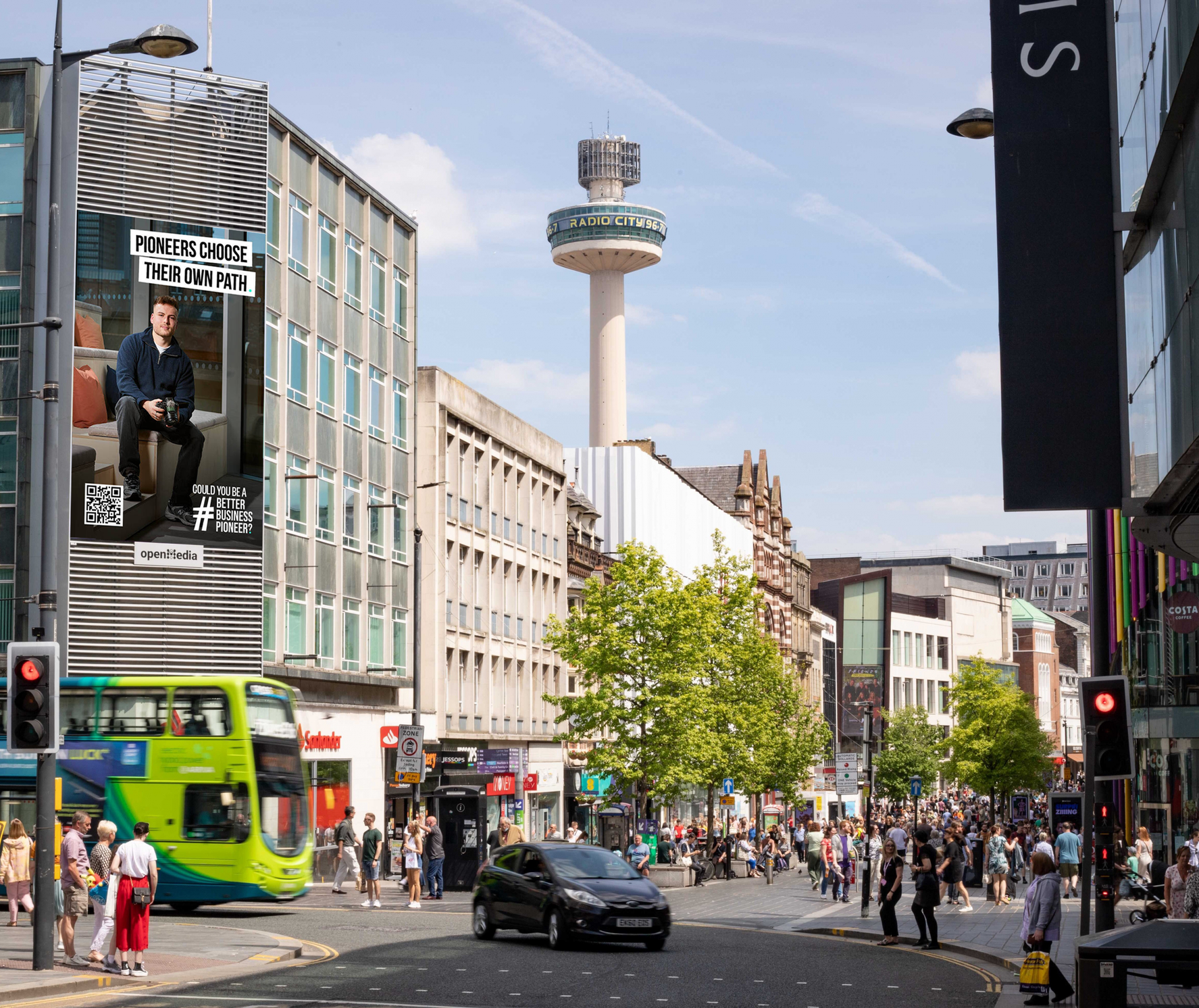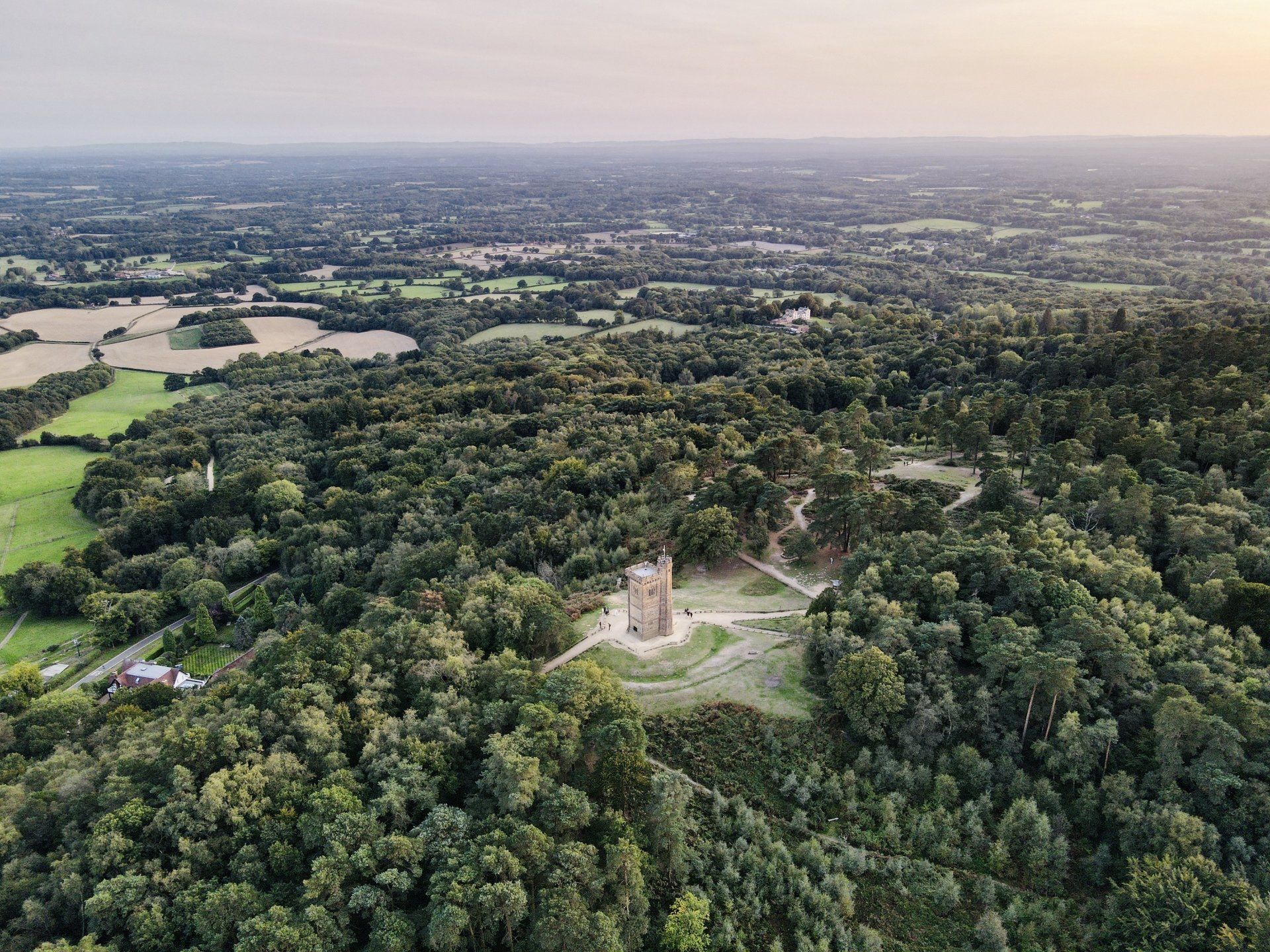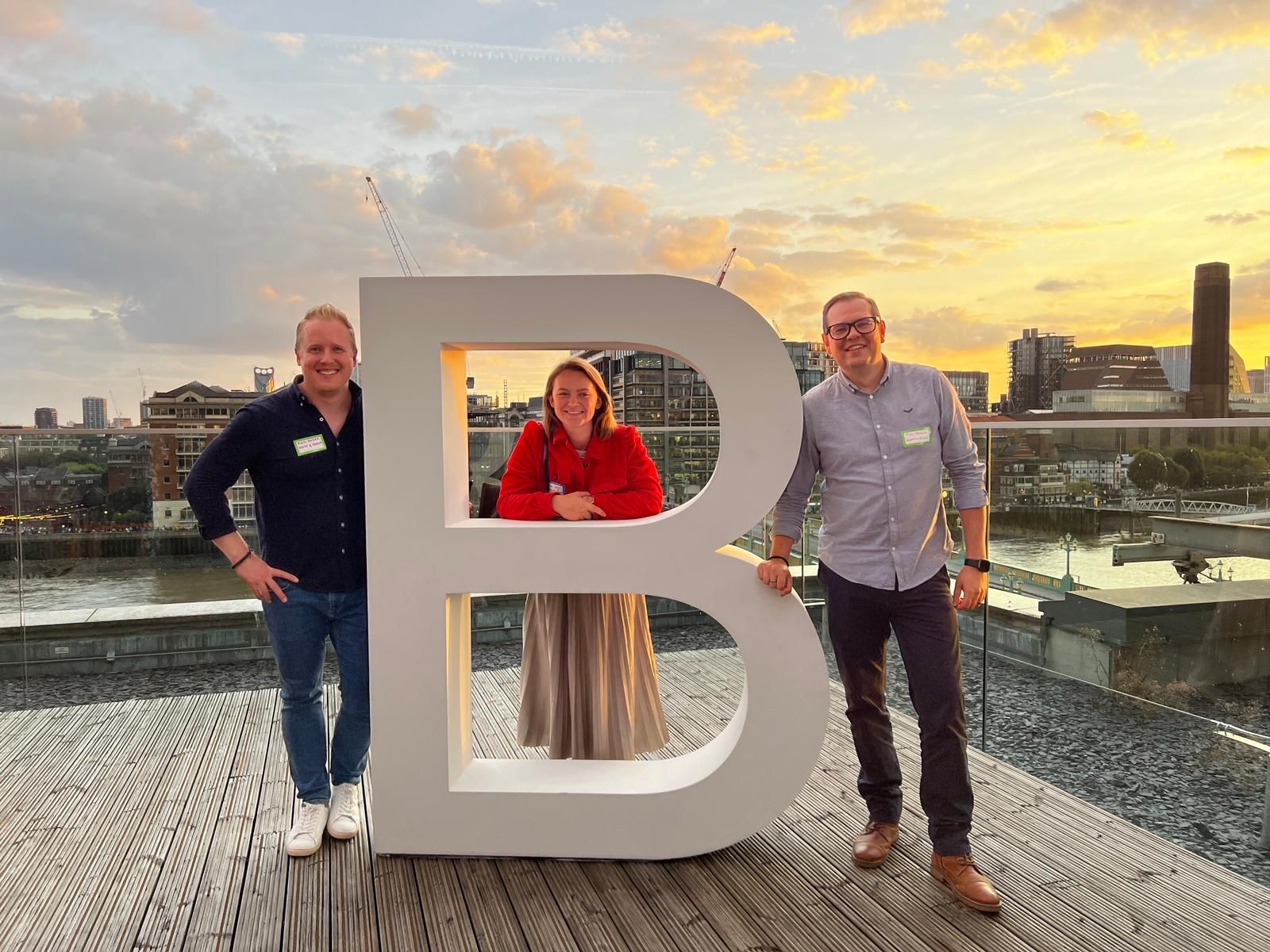90% of our clients start their journey with us with our Brand & Marketing Audit.
15-Minute Cities: Measuring your city in minutes
The ‘15-minute city’ (FMC) has become a much talked about craze in the past few months in the UK after Oxford City Council proposed the FMC model for Oxford as part of the Local Plan 2040. As you’d expect, the feedback celebrating the idea of centralising cities around the daily lives of the town’s people was matched with the resounding noise from protestors and conspiracy theorists under the impression that Oxford was about to become a Children of Men style ghetto where you need transit papers to get to your local Tesco.
Now where does a city that’s measured in minutes fall into the sustainable built environment? Over the past few years, urban planners have begun to realise the importance of sustainable, net-zero development, and the prospect of walkable cities with improved accessibility to public facilities, green spaces, and daily necessities has seen a great deal of attention worldwide.
So what actually is a FMC, where did the idea come from, and what’s with all the notoriety surrounding it?
CITIES NEED TO BREATHE
The actual term ‘15-minute city’ was coined by Professor Carlos Moreno in 2016, netting him an Obel Award in 2021 for doing so. Moreno’s vision is that the FMC comes about from designing or redesigning cities to provide nearly all essential needs within a 15 minute walk or bike ride of someone’s place of residence. In an ideal FMC, you can easily get to all necessary shops, green spaces, and services (health, postal, hospitality, etc) all without getting behind the wheel to churn out fumes for a 2 minute drive to pick up some milk.

Designing cities in this way aims to take us back to the idea of a real ‘living city’, supporting decentralisation, greatly reducing car traffic and CO2 emissions, while greatly increasing the health and wellbeing of residents in the city. It’s important to note that despite this model being globally applicable, it can be adjusted to the culture, conditions, and needs of the subject city.
What’s interesting about the FMC is that it was originally born from a philosophy called ‘chrono-urbanism’ which has its roots back in the early 1900s. Chrono-urbanism states that the quality of human life in cities has drastically diminished because of the amount of time people have to spend travelling around it (mostly in cars). Your place of work, home, leisure services, and shops are all determined by how cities are currently centralised. Moreno was driven by his desire to cut up to 70% of carbon emissions in cities (mainly caused by transport and buildings), but this is on top of an aim to address the long commutes that degrade our quality of life.
“We have become prisoners of the clock that marks the pace of urban life, with its obligations resulting in almost permanent accelerations” - Carlos Moreno
The Neighbourhood Unit
Although Moreno coined the term and brought a lot of attention to the FMC label, the philosophy behind the FMC is much older. An architect and urban planner by the name of Clarence Perry created the concept of something called the ‘neighbourhood unit’ in the 1920s, which is quite like an FMC in its infancy. The reasoning behind the neighbourhood unit funnily enough was born from the observed rise of automobiles. The infrastructure to manage an influx of vehicular traffic was not yet commonplace in major cities during the 1920s, so all sorts of mayhem was going on due to lack of traffic lights, pedestrian crossings, and general social consciousness surrounding the automobile. Traffic-related mortality rates soared throughout the decade at a continuous rise, and NYC was seeing around one child fatality a day caused by traffic collisions.
With Perry noticing the constant dangers the community faced through vehicles unsuccessfully coexisting with the current urban planning, he visualised the ‘neighbourhood’ as a safe haven; where areas are suited more for the individual and their needs, not the automobile.
Just take a look at
this diagram from Perry’s 1929 Regional Survey of New York City showcasing a proposed fully self-contained residential neighbourhood. The end goal here being to create a neighbourhood that puts the community and its inhabitants at the centre, where vehicles are permitted but are not made a necessity.
To sum up Perry’s main principles from the neighbourhood unit, he aimed to:
- Keep schools at the centre of the neighbourhood so that the walk to school was never more than a half mile long and could be achieved without crossing a major arterial street. The neighbourhood itself should also be sized to sufficiently support a school.
- Encourage school facilities to be available for wider community use. E.g. School grounds that can be used for play and leisure for the whole neighbourhood community.
- Avoid through-traffic from the neighbourhood by placing arterial streets along the neighbourhood perimeter. This is so the main roads help to define the neighbourhood boundaries instead of scramble or divide them.
- Specifically design streets in a hierarchy to help distinguish local streets from arterial streets using curvilinear street design instead of the conventional American grid pattern (block) for both safety of the neighbourhood inhabitants and to improve aesthetics. In an ideal neighbourhood unit, the optimal street design would discourage any unwanted through-traffic and ensure the safety of pedestrians.
- Keep local shopping areas to perimeters or the entrance of the neighbourhood to avoid through-traffic for the commercial purposes of nonlocal inhabitants.
- Bolster community spaces by dedicating at least 10% of the neighbourhood land area to parks and open space, providing areas for community interaction, leisure, and green space.
Are there any FMCs today?
Although Perry’s original vision is nearing 100 years old and current road regulations probably don’t permit the exact designs from his diagram, I think the main principles envisioned by Perry are still as implementable now as they were back then.
It’s unlikely we’ll be able to see the FMC model in action in Oxford for quite some time. Still, I think it’s important to see real world examples of implemented FMCs to better understand how practical applications have been handled and to see if their introductions have been successful. So, are there any places in the world where we can actually see a fully operational FMC today? Have any cities utilised Perry’s principles?
In 2020, Paris saw the re-election of mayor Anne Hidalgo who included FMCs as part of her re-election campaign. The FMC transformation is still ongoing within the city, but Hidalgo took the first step during the first wave of COVID-19 lockdowns. What began as a pandemic-focused shift towards more bike lines and street closures for social distancing has continued on since then, and is now seeing the mixed-use of schools after hours and on weekends by transforming them into community hubs and recreational public spaces. This is on top of a new programme aiming for greener school streets by encouraging travel routes to schools that don’t require motorised transport. A good specific example of the ongoing transformation of Paris is the 2019 renovation of Place de la Bastille, turning a large area of city road into an open space for pedestrian use.

Melbourne is the fastest growing city in Australia with a population on track to double from its current 4.6 million by 2051. Melbourne adopted something similar to the FMC model back in 2017 with aims to completely reshape the city by 2050. With their pilot currently ongoing in areas like Croydon South and Strathmore, they’ve seen much positive feedback from the project evaluations conducted by city councils. Taking the Strathmore pilot as an example, it not only helped identify where improvements needed to be made to pedestrian and cyclist safety, bike lanes, and housing diversity, it also brought more promotion to local traders and provided for more community spaces like pop-up parks.
It’s with no surprise that with the positive feedback being received in Melbourne, the city is looking to continue the FMC model spread throughout the next few decades in more neighbourhoods of the city.
You might think that with the ingrained idea of urban sprawl the USA has, it might make the concept of an American FMC much of a myth. Although you’re not likely to find something that isn’t a sprawl over there, that’s not to say that FMCs are completely implausible under American infrastructure. After all, Perry did conceive his original idea as a model applicable to American cities.
Oregon State’s largest city, Portland, also carries Melbourne’s mindset, after setting a goal for 90% of its residents to live within a 20-minute neighbourhood in 2009. While measuring against the 2010 baseline, it was found in 2020 that Portland’s improved transit service, retail, convenience stores, and pavements improved pedestrian accessibility in the city. However, the transformations seen by the city didn’t lower the vehicle miles travelled within it. It’s hopeful that from 2020 onwards, Portland can fight against the ingrained car culture of the USA and add more efforts to decrease vehicle use in the city now that the FMC model has decreased the need for car travel.
What's going on in Oxford?
With city councils across the UK like Oxford’s dabbling with proposals to transform their localities into FMCs, it doesn’t come without some form of civil unrest. There’s been a few right wing commentators here and there up in arms over the idea, claiming that the FMC model exists as a plot to restrict personal freedoms. What this eventually resulted in is a 2,000 person protest in February of this year.
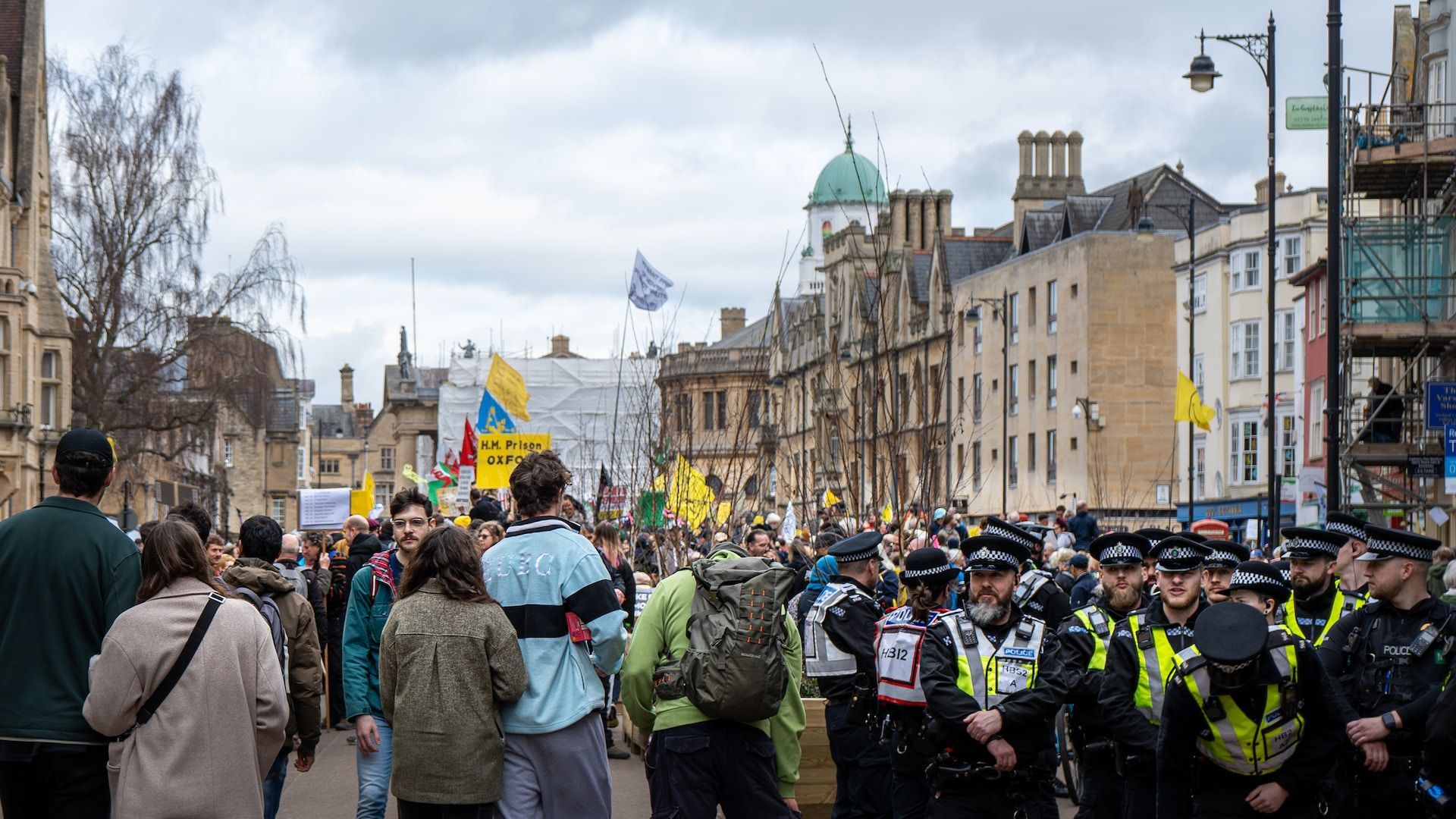
Thinking about it, it does seem a little odd that a model specifically designed to allow more personal freedoms for the inhabitants of a city has garnered a reputation surrounding the exact opposite. Even Conservative MP Nick Fletcher called the FMC model an ‘international socialist concept’ that will ‘cost us our personal freedom’. You won’t be surprised that this has come around from a severe misunderstanding, resulting in the spread of misinformation.
FMCs may sometimes come hand in hand with the introduction of restrictions to traffic, most notably LTNs (low traffic neighbourhoods). However, there seemed to have been a crossing of wires somewhere down the line as the protestors and conspiracy theorists ended up connecting two separate plans into one big one, resulting in the idea that Oxford was soon to be on complete lockdown where you can’t go to the end of your road without getting slapped with a fine and put under house arrest.
With Oxford
City Council proposing the FMC model to be introduced over the next 20 years, it was Oxfordshire
County Council who proposed LTNs traffic measures throughout the city from 2024 onwards. Basically meaning that drivers in Oxford will be encouraged to travel around the city through a ring road or by using public transport, rather than driving through it and congesting it.
Similar to other LTNs, the council will hand out fines to dissuade vehicles from entering the dense city areas that have been divided into 6 different zones, avoiding clogged roads and unnecessary emissions. Residents will be able to drive throughout their own neighbourhoods, but passing through a traffic filter into another neighbourhood will net you a “fine” (actually just congestion tax). Although it sounds quite menacing, there won’t be fines getting dished out for anyone who needs to use these roads for a genuine reason during a designated 7am-7pm time slot (like carers or blue badge holders).
At the end of the day, you’re fined for using specific congested streets to get from point A to point B instead of using the major thoroughfares, not for daring to leave your own designated neighbourhood. The FMC model was referenced in the LTN plans, but the new traffic zones are not actually part of the the FMCs plans the protestors claim they are.

You might be surprised to find out that the proposed LTNs used by FMCs aren’t a new phenomenon and already exist in many areas of the world. For example, Italy has ZTLs in place (Zona Traffico Limitato) in major cities such as Rome and Florence to reduce congestion in high traffic areas and are seen as crucial to helping slow the inevitable structural decay of Italy’s historic city centres. In a lot of these zones, you’ll find old roads, areas where driving is prohibited at certain times of day, and many one way streets, so the introduction of ZTLs makes sense.
So then, it seems as though much of the outrage is actually being misdirected. Most of it has been aimed at the LTN measures and then in turn been poorly attributed to the FMC model because of the mix up. Even though the council’s FMC plan is tied to generally reducing the use of cars, nowhere does the plan actually aim to introduce policies enacting traffic restrictions.
What a FMC can do for us
You might have gotten an idea already, but what are the actual main benefits of FMCs? After suffering a lot of bad press because of the Oxford debacle, perceptions of what FMCs can do for city inhabitants might be a bit skewed. First thing’s first, we need to put the main myth to rest. The FMC isn’t going to keep you under lock and key and rip your freedoms from you.
See the nice big quote near the beginning of the blog? It's not an ideal scenario to keep the lives of city inhabitants confined to their cars. Your life and lifestyle shouldn’t be leashed to your vehicle, and we should all be able to run errands without being stuck in traffic, take walks or bike rides to work, or even work remotely if need be.
I’ll speak for everyone when I say that commuting definitely isn’t a highlight of the day, especially if you need to commute by car. You can spend your commute doing something fun like listening to music or an audiobook to make the most out of the time, but you’re still stuck in a metal box for a set period of time and possibly exposed to stressors such as traffic congestion on top of the pressures of being punctual. This is even a topic that has been explored in
this study
into the association between commuting, subjective wellbeing, and mental health.
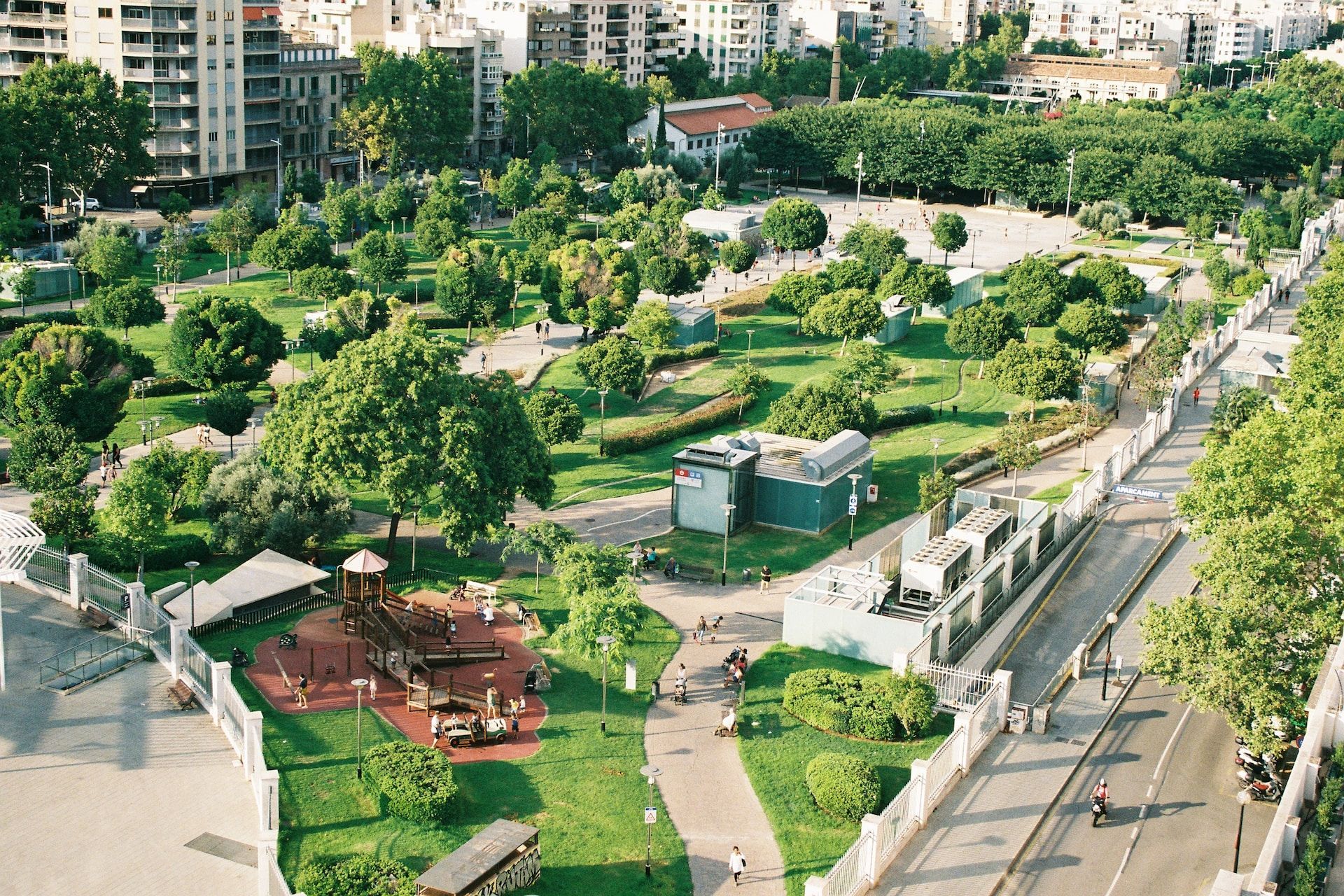
The increased personal freedom of a FMC naturally comes with a big boost to the mental health of city inhabitants. Being encouraged to partake in more physical activity like walking and cycling, being given green spaces to use for leisure, and having the alleviation of the stressors of motor travel can do wonders for an individual’s mental health.
Although the individual benefits are certainly there, It’s also quite important to highlight the benefits seen by local communities when using FMC principles. A FMC way of living naturally promotes higher levels of inclusion, connection, and togetherness within the community. The proof is already in the pudding thanks to the COVID-19 pandemic, as the world has already seen how a way of living stricken with social isolation and too much individuality presents many negative effects to the mental health of individuals, as well as harm to the economy of local business.
Last but not least, the most obvious benefit is the push towards a sustainable built environment. Lower transport emissions from cars reduces air pollution and more green spaces can reduce the urban heat-island effect and boost urban biodiversity.
We might have only heard about the new FMC label in the past couple of years, but the model has been put into practice worldwide long before it was making headlines. Regardless of the label’s notoriety, FMCs have the potential to revolutionise the way we live in cities through prioritising accessibility, proximity, and community. By embracing FMC principles, cities can become more sustainable, inclusive, and promote better mental health for city inhabitants.
Avery & Brown is a brand, marketing, and creative partner to companies in the built environment sector, offering sustainable marketing expertise, industry knowledge, and a passion for regenerative business. If you enjoyed this blog and are interested in seeing our latest built environment insights, keep an eye out on Outpost
here.
Share the love
